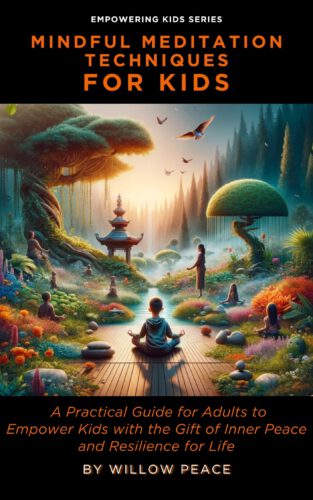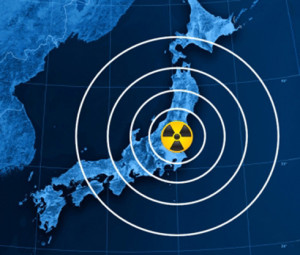Guest Writer for Wake Up World
In March 2011, a massive earthquake and an ensuing tsunami triggered the meltdown of three nuclear reactors at the Fukushima Daiichi Power Plant. Almost 4 years later we’re still seeing repercussions of the disaster, and the effects will likely continue for decades. This disaster is contributing to untold health concerns and environmental damage.
Five Things You Should Know About Fukushima
While you may have heard information about Fukushima in the news, there are some stories the mainstream media isn’t covering. Let’s dive into 5 things you’re not being told about the Fukushima situation.
1. Two Trillion Becquerels of Radioactive Material Escaped Reactor 1
A recent report from the Tokyo Electric Power Company (TEPCO) says 2 trillion becquerels of radiation may have flowed into the Fukushima power plant bay in a short amount of time. From August 2013 to May 2014, documents estimate that the No. 1 reactor leaked more than 10 times the limit of radioactive material TEPCO set before the meltdown. [1] That’s a lot of radiation drifting out into the Pacific Ocean!
2. US West Coast Will Experience Peak Radiation in 2015
Scientific reports suggest levels of Cesium-137 will peak in water supplies on the US West Coast and in Canada by the end of this year. [2] Cesium-137 is a radioactive isotope that presents a strong danger to human health. After drinking contaminated water, your body’s tissues can be exposed to low levels of gamma and beta radiation which could increase your risk for certain types of cancer. [3]
3. Thyroid Cancer is Spreading in Japan
Radiation in water is just one concern; thyroid cancer, often linked to radiation exposure, is on the rise among youth in the Fukushima Prefecture. Local government officials want to downplay a connection to radiation from the triple meltdown and these new cases of cancer. While it’s still too soon to determine an actual cause, experts agree that the rate of incidence is disturbingly high. [4]
4. Japan is Planning to Build More Nuclear Plants
After the natural disasters that led to the Fukushima meltdown, all of Japan’s nuclear reactors were suspended. In 2012, the Japanese government created a regulatory agency to restore public confidence in nuclear power. Recently, the agency approved the reopening of 2 of Japan’s 48 reactors. [5] There are many that believe the safety certification of the two reactors at Sendai Power Plant was pushed by the current government. The current prime minister is unashamedly pro-nuclear and wants to reopen and build more reactors. But, in an earthquake-prone country, is this really the best idea?
5. Experts Can’t Agree on the Health Dangers
With a pro-nuclear government in power, Japan is seeing something similar to what happened in Ukraine after Chernobyl. Nuclear authorities tend to deny the negative results reported by researchers in an attempt to further their goals; in this case, a return to nuclear power. [6] Many scientists are rather miffed with a watered-down UN report that came out in late 2013. [7] They argue it ignored negative scientific studies and lacked documentation for certain claims, leaving some worried that authorities won’t acknowledge the radiation threat until it’s too late. [8]
Fukushima is a Bad Situation
The Fukushima disaster has left us a terrible legacy we can’t give back. Unfortunately, the Japanese—especially those in the Fukushima Prefecture—can’t even drink their sorrows away. The sake brewers there are finding no one wants to buy their products due to reports of contaminated rice and water. [9]
What do you think about the Fukushima disaster? Please tell us your thoughts and/or concerns in the comments.
-Dr. Edward F. Group III, DC, NP, DACBN, DCBCN, DABFM
Article References
- The Japan Times. Two trillion becquerels of radioactive material may have escaped No. 1. The Japan Times.
- Smith, J. et al. Arrival of the Fukushima radioactivity plume in North American continental waters. Proceedings of the Natural Academy of Science.
- Davies, L. Increasing Incidence of Thyroid Cancer in the United States, 1973-2002.The Journal of the American Medical Association. 295 (18).
- Radiation Medical Science Center for the Fukushima Health Management Survey.Proceedings of the 17th Prefectural Oversight Committee Meeting for Fukushima Health Management Survey. Fukushima Radiation and Health.
- Fackler, M. Three Years After Fukushima, Japan Approves a Nuclear Plant. The New York Times.
- Boyd, J. Experts clash on Fukushima radiation effects. Aljazeera.
- United Nations Scientific Committee on the Effects of Atomic Radiation. UNSCEAR 2013 Report. United Nations Scientific Committee on the Effects of Atomic Radiation.
- Imanaka, Tetsuji. Current Topics about the Radiological Consequences by the Chernobyl Accident. Research Reactor Institute, Kyoto University .
- Balfour, B. The woes of Fukushima’s sake brewers. BBC News.
Previous articles by Dr. Group:
- 7 Herbs for Men’s Health
- 6 Things You Must Know About Colloidal Silver
- The 9 Best Herbs for Lung Cleansing and Respiratory Support
- 7 Best Foods to Support Kidney Function
- How to Flush the Liver
- Lung Cleansing With Peppermint Oil
- Nine Dangers of Fluoride Exposure
- Seven Facts You May Not Know About Coconut Oil
- 5 Dangerous Chemicals in Conventional Sunscreens
- 10 Best Herbs for Boosting Female Sex Drive
About the author:
 Dr. Edward F. Group III (DC, ND, DACBN, DCBCN, DABFM) founded Global Healing Center in 1998 and is currently the Chief Executive Officer. Heading up the research and development team, Dr. Group assumes a hands-on approach in producing new and advanced degenerative disease products and information.
Dr. Edward F. Group III (DC, ND, DACBN, DCBCN, DABFM) founded Global Healing Center in 1998 and is currently the Chief Executive Officer. Heading up the research and development team, Dr. Group assumes a hands-on approach in producing new and advanced degenerative disease products and information.
Dr. Group has studied natural healing methods for over 20 years and now teaches individuals and practitioners all around the world. He no longer sees patients but solely concentrates on spreading the word of health and wellness to the global community. Under his leadership, Global Healing Center, Inc. has earned recognition as one of the largest alternative, natural and organic health resources on the internet.
For more information, please visit Global Healing Center.

If you've ever found value in our articles, we'd greatly appreciate your support by purchasing Mindful Meditation Techniques for Kids - A Practical Guide for Adults to Empower Kids with the Gift of Inner Peace and Resilience for Life.
In the spirit of mindfulness, we encourage you to choose the paperback version. Delve into its pages away from screen glare and notifications, allowing yourself to fully immerse in the transformative practices within. The physical book enriches the learning process and serves as a tangible commitment to mindfulness, easily shared among family and friends.
Over the past few years, Wake Up World has faced significant online censorship, impacting our financial ability to stay online. Instead of soliciting donations, we're exploring win-win solutions with our readers to remain financially viable. Moving into book publishing, we hope to secure ongoing funds to continue our mission. With over 8,500 articles published in the past 13 years, we are committed to keeping our content free and accessible to everyone, without resorting to a paywall.







